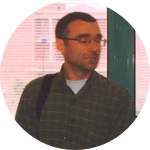About This Project
Cosmic rays are accelerated particles (99% nuclei of atoms) with two main origins: Solar and Galactic. There is, curiously, no research of cosmic rays' nature, spectrum and incidence ratio in a solar eclipse event. The US solar eclipse offers a great opportunity to understand if cosmic rays destroy ozone through degradation showers (decay of cosmic rays) in the upper layers of the stratosphere.
Ask the Scientists
Join The DiscussionWhat is the context of this research?
In 2014 we conducted a high altitude balloon launch (with help of Barcelona based Institute CIC), that achieved an altitude of 32km to study the effect of cosmic rays on c hlorofluorocarbons (CFCs ). We found a possible line of research that could beneficiate from a solar eclipse to eliminate low energy solar cosmic rays from the equation. Researchers (Liu et al.), at the time, linked these two distant objects (cosmic rays and CFCs) as a possible novel cause to ozone degradation during the Antarctic summer months.
What is the significance of this project?
Even though the origin of cosmic rays has been studied for at least 100 years, recent advances regarding the high-energy part of the spectrum have appeared. Even findings of their relation with supernovae and gamma bursts (M. Ackerman et al). However, there are still questions regarding their formation and origin.
There is curiously no research of cosmic rays' nature, spectrum, incidence ratio and others characteristics during a solar eclipse event. This year (21st August) offers a great opportunity to study the nature of cosmic ray's during a solar eclipse. Moreover, no experimental setup exists to study ozone decay by these particles. The easily accessible location (USA) and the length of the phenomenon makes a study like the proposed here of great interest.
What are the goals of the project?
By covering the sun (the biggest producer of interference of cosmic rays) with the moon, we can focus on intergalactic particles. And the high altitude achievable of these payloads (past experience up to 32km) the atmospheric noise and wipeout of the rays is nonexistent (Up to 97% increase of rays incidence at those altitudes, Hague J. D et al). With this important fact we will be able to monitor the incidence of these particles and provide crucial information on their origin.
This will unite to the major OBJECTIVE of this research: can the rays' degradation shower be a source of chlorine production in the upper layers of the stratosphere and therefore an ozone destructor?
Budget
All the listed items are crucial for the research and will make it a reality. These inputs together with New York Explorer's Club grant will help shine light into a still unknown area.
Endorsed by
 Project Timeline
Project Timeline
After launch and retrieval of data in August 21, analysis will be conducted in the following month. Collaboration with third parties (Dr. Hung-i-Lee and others) may take place beginning of September.
Aug 12, 2017
Project Launched
Aug 16, 2017
Travel to Salt Lake City.
Aug 18, 2017
First testing of ballon and instruments.
Aug 21, 2017
Launch and retrieval.
Aug 23, 2017
First batch of data openly published.
Meet the Team
Team Bio
Certainly, collaborative projects always arrive to new borders of science easily. Mr. Albert P. , Dr. Hung-i-Lee , Mr. Guillem Rivas will all work on our ballon project and bring their different backgrounds (Atmospheric science, Electrical engineering and Astrophysics) into play.
Guillem R.
Passionate for applied research since I had memory, I use statistical methods to find relationships between composition of asteroids and their physical parameters. Astrophysics student and modest experiment builder. I found high altitude ballons a way to obtain data economically and effectively. Many questions can be raised and solved using low impact and "quick" solutions like stratospheric probes. Part of UCLA B.sc Physics (USA), University of Fribourg (CH).
Project Backers
- 2Backers
- 3%Funded
- $55Total Donations
- $27.50Average Donation

